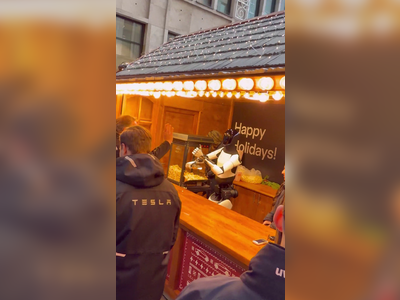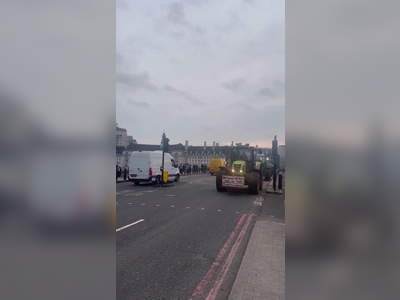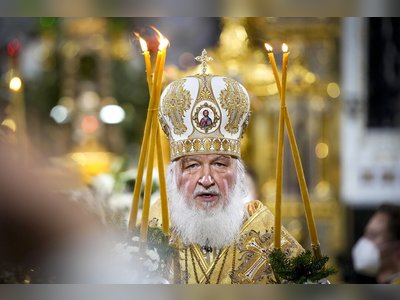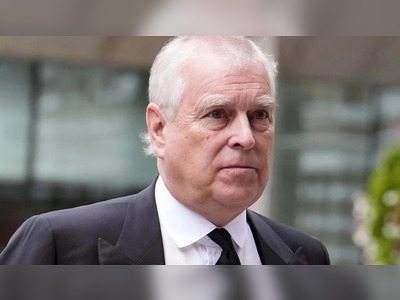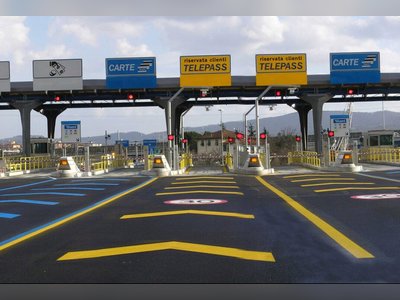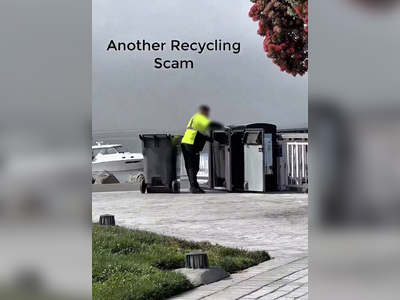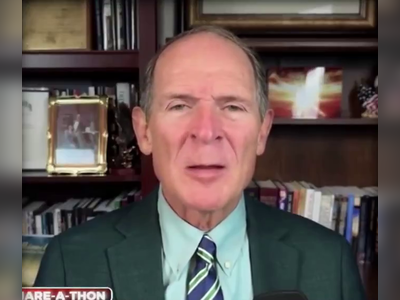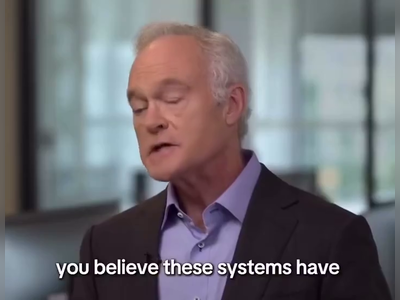
How London almost got its own Eiffel Tower
Instead, it never went past the first construction stage, which came to be known as the "London Stump." It was demolished almost 120 years ago, leaving behind an unfulfilled dream and large concrete foundations that were rediscovered in 2002, when the current stadium was built to replace an older one.
So what went wrong?
The tower was the brainchild of Edward Watkin, a British politician and railway tycoon whose previous endeavors included a failed attempt to build a tunnel under the English Channel, more than 100 years before the current Eurotunnel began construction.
'Bigger the better'
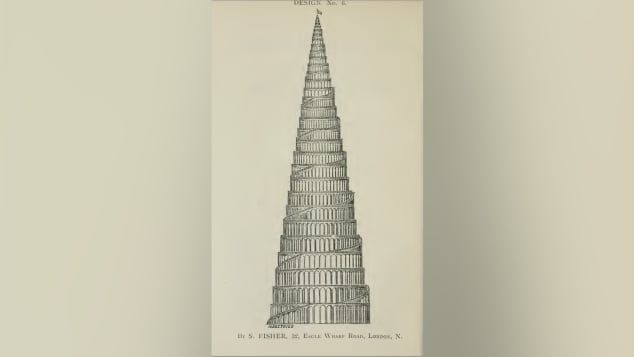 One of the tower designs that didn't get picked.
One of the tower designs that didn't get picked.
"Watkin was a born entrepreneur and he loved big ideas -- the bigger the better," says Christopher Costelloe, an expert on Victorian architecture and an inspector of historic buildings at public heritage organization Historic England. "I think he had a tendency to get so excited with his ideas that he often plowed ahead before thinking about how practical or financially viable they were."
The Eiffel Tower, which opened in 1889, quickly became a popular tourist attraction and its construction costs were recouped in a matter of months.
At the same time, Watkin was looking for ways to attract more passengers onto his Metropolitan Railway -- which would later become the Metropolitan line on the London Underground.
The railway passed through Wembley, then a rural hamlet northwest of central London, where Watkin had purchased land to create an amusement park: "It was meant to be the Disneyland of its day, or the successor to the early 19th-century leisure parks like Battersea Park in London or Tivoli Gardens in Copenhagen," says Costelloe.
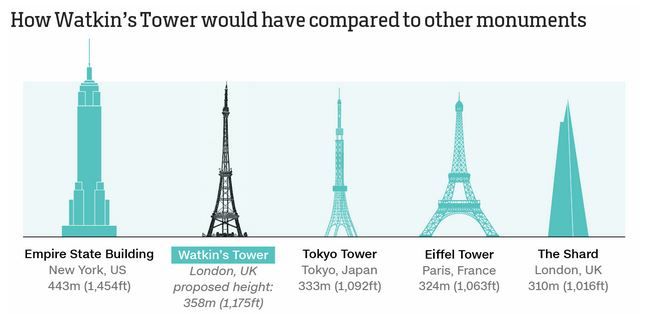
What better than a tower taller than the Eiffel to convince Londoners to board a train to get there?
Watkin had the audacity to ask Gustave Eiffel himself to design it, but the French engineer refused on patriotic grounds. His plan B was an international design competition, with a first prize of 500 guineas, about $80,000 in today's money.
He received 68 submissions, not all of them realistic.
One was 2,000 feet tall and was meant to have a train running halfway to the top, on a spiraling railway. Another was designed as an "aerial colony" with sky gardens, museums and galleries, as well as a reproduction of the Great Pyramid at the top.
Most, however, matched the aesthetics of the Eiffel, and it was one of these that Watkin selected as the winner, submitted by London architects Stewart, McLaren and Dunn.
"The winning proposal was a more slender version of the Eiffel Tower. Very similar in its overall profile, but the structure was sort of skinnier," says Costelloe.
At 1,200 feet, it was also about 175 feet taller than its Parisian counterpart, which was the world's tallest building at the time.
A not-so-popular attraction
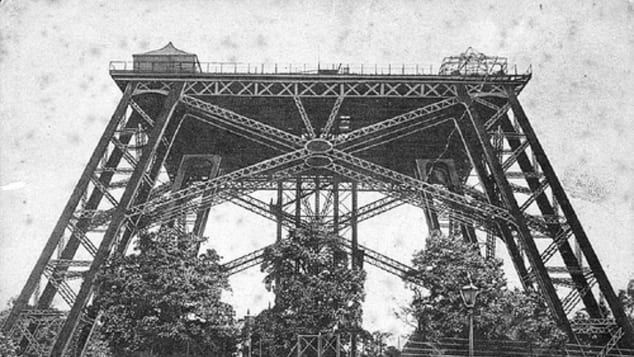 The first, and only, completed stage of the tower.
The first, and only, completed stage of the tower.
All entries were collected in a catalog, published in 1890, which described the project in detail and revealed that the London tower would be "much more spacious" than the Eiffel and include "restaurants, theaters, shops, Turkish baths, promenades, winter gardens and a variety of other amusements," all reachable via a recent invention, the electric elevator. An observation deck would offer panoramic views and astronomical observations, facilitated by the "purity of air" found at such an "immense height."
After the initial fanfare, however, the proposed design was scaled down to make it cheaper to build, and the legs were reduced from the original eight to four, the same number as the Eiffel.
Construction began in 1892, and the first stage -- approximately 150 feet tall -- was finished three years later.
Wembley Park had opened the year before and was enjoying moderate success, but the tower still had a long way to go -- and there was something wrong with it.
"When they reached the first stage, it soon became clear that the building was subsiding. Not so badly that they couldn't use it, but they certainly realized they'd have big problems if they carried on building it higher, increasing the strain on the legs," says Costelloe.
Although it was opened to the public and elevators were installed, the tower was doomed.
"One of the main problems was that Watkin died in 1901," Costelloe adds. "He had been the driving force behind the project and with his death all that was left was a rational calculation of costs and benefits. People could go up to the first stage, but that wasn't quite high enough to get the sort of panoramic views you'd get from the top of the Eiffel Tower, and the surrounding area wasn't particularly developed or spectacular.
"There just weren't enough visitors to pay for finishing it."
Tallest in town
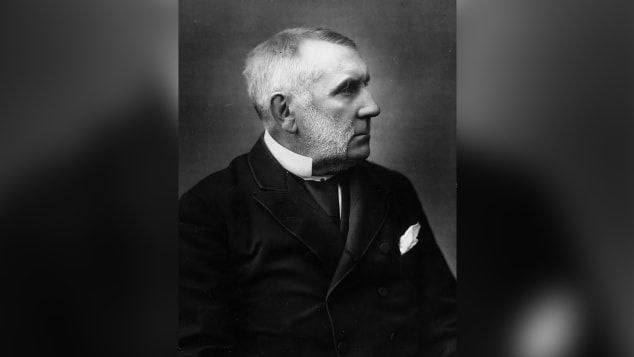 Once Watkin died, the impetus for building the tower was lost.
Once Watkin died, the impetus for building the tower was lost.
A year after Watkin's death, the tower was declared unsafe and closed down. Shortly after, it was demolished with dynamite. The surrounding Wembley area, however, continued to flourish as an industrial and residential London suburb.
In 1923, a stadium, which would later be known as the original Wembley Stadium, was erected on the former site of the tower. Its demolition to make way for the current Wembley Stadium eventually unearthed the tower's foundations, when work to lower the level of the new pitch was undertaken. It was a late reminder of the failed tower, also referenced by a pub in the area called "Watkin's Folly" (it closed permanently in 2019).
Remarkably, Watkin's Tower would still be London's tallest building today, surpassing The Shard skyscraper by almost 160 feet. But would it be an iconic landmark like the Eiffel Tower? Probably not, says Costelloe: "It would still have been a very big structure on the skyline, but seen only in certain views," he says.
"Not being in the center of London, it would never have had the sort of dominating focus that the Eiffel Tower has in Paris."

